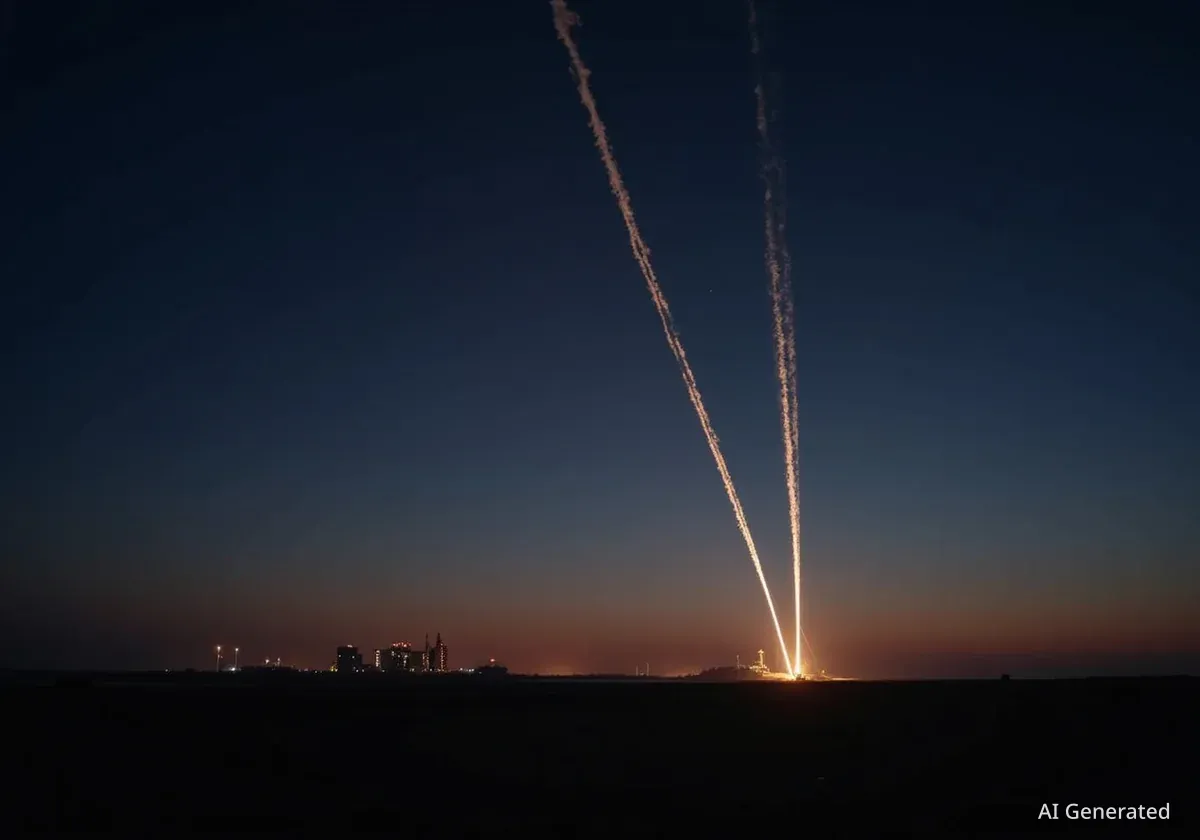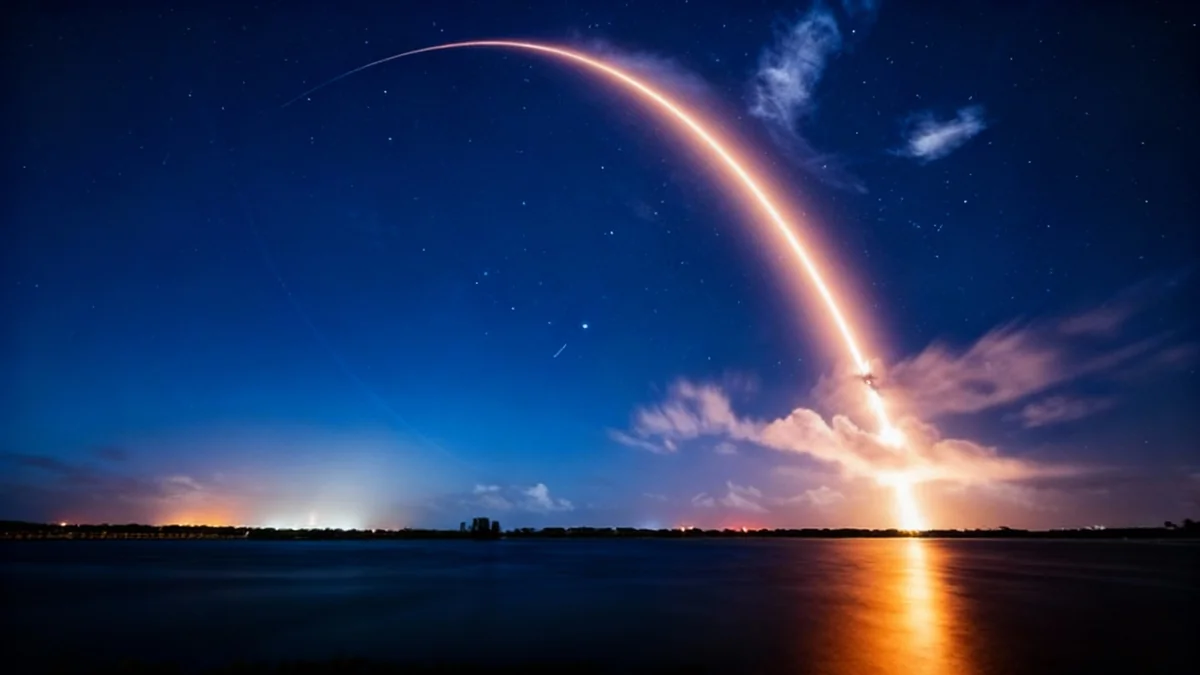SpaceX maintained a rapid operational pace over the past week, conducting multiple Falcon 9 launches from Florida's Space Coast while simultaneously advancing its Starship program in Texas. Key events included the deployment of internet satellites for both Amazon and its own Starlink constellation, alongside a notable Starship test flight visible from Florida.
Key Takeaways
- SpaceX launched three Falcon 9 rockets from Cape Canaveral, deploying satellites for Amazon's Kuiper project and its own Starlink network.
- A Falcon 9 booster completed a record-breaking 31st flight during a Starlink mission on Sunday, October 19.
- A Starship test flight from Texas on October 13 was visible in Florida's evening sky, highlighting the vehicle's high-altitude performance.
- The company's facility in Cape Canaveral is producing approximately 1,000 Starship heatshield tiles per day.
- Development continues on Starship V3, a larger and more advanced version of the next-generation rocket.
Multiple Launches from Cape Canaveral
The week's launch activities began on Monday, October 13, with the successful liftoff of the KF-03 mission at 9:58 p.m. from Launch Complex 40 at Cape Canaveral Space Force Station. This launch carried prototype internet satellites for Amazon's Project Kuiper, a direct competitor to SpaceX's Starlink service.
This mission marked another step in the development of a large-scale satellite internet constellation, demonstrating the increasing demand for launch services that SpaceX provides to various companies, including its rivals.
The Growing Satellite Internet Market
Both SpaceX's Starlink and Amazon's Project Kuiper aim to provide global broadband internet service from low-Earth orbit. These constellations require thousands of satellites, driving a high demand for frequent and reliable rocket launches. SpaceX's Falcon 9 has become a primary vehicle for deploying these networks due to its reusability and proven track record.
Consecutive Starlink Missions
Following the Amazon launch, SpaceX quickly prepared for its own missions. On Thursday, October 16, a Falcon 9 rocket launched the Starlink 10-52 mission during a pre-dawn window that opened at 2:42 a.m. The rocket successfully deployed 28 Starlink broadband satellites into low-Earth orbit after lifting off from Launch Complex 40.
The week concluded with another Starlink launch on Sunday, October 19. The mission, designated Starlink 10-17, took place during a midday window opening at 10:52 a.m. This launch was particularly significant as it marked the 87th orbital launch from Florida in the calendar year and set a new record for booster reuse.
Record-Breaking Booster Reusability
The Falcon 9 first-stage booster used for the Sunday, October 19 mission completed its 31st successful flight. This achievement underscores SpaceX's leadership in rocket reusability, a key factor in reducing launch costs and increasing flight frequency.
Starship Program Advances
While Falcon 9 missions continued from Florida, SpaceX's next-generation Starship vehicle also made headlines. On the evening of October 13, a Starship prototype launched from the company's facility in Brownsville, Texas. The vehicle's ascent into the upper atmosphere created a striking visual display that was widely observed across Florida just after sunset.
The sighting, initially mistaken by some for an unidentified object, highlighted the scale and altitude of Starship test flights. It also served as a preview for Floridians, as SpaceX is preparing facilities at Kennedy Space Center for future Starship operations.
Florida's Role in Starship Manufacturing
SpaceX's presence in Florida extends beyond launch operations. A key manufacturing facility, informally called a "bakery," is located in Cape Canaveral and is dedicated to producing thermal protection tiles for the Starship vehicle. According to company reports, this facility is producing approximately 1,000 heatshield tiles per day.
These hexagonal ceramic tiles are crucial for Starship's reusability. They are designed to protect the vehicle from the extreme heat generated during atmospheric reentry, allowing it to survive multiple flights. The high production rate is essential for outfitting the growing fleet of Starship vehicles.
The Importance of Heatshield Tiles
A fully reusable spacecraft must withstand temperatures exceeding 2,700 degrees Fahrenheit (about 1,500 Celsius) upon returning to Earth. The thousands of individual tiles on Starship's surface are engineered to absorb and dissipate this intense heat, protecting the vehicle's structure and enabling rapid turnaround for subsequent launches.
Future Development: Starship V3
SpaceX is already planning the next evolution of its massive rocket. Company officials, including founder Elon Musk, have indicated that an upcoming version, known as Starship V3, will be even larger and more capable than the current design that has flown 11 test flights from Texas.
The advancements planned for V3 are part of SpaceX's iterative design philosophy, where lessons from each test flight are incorporated into subsequent versions. This rapid development cycle is central to the company's long-term goal of creating a fully reusable transportation system capable of missions to the Moon, Mars, and beyond.
The ongoing activities, from record-setting Falcon 9 flights in Florida to advanced Starship manufacturing and testing, illustrate a period of intense activity for SpaceX as it works to expand current launch services while building the foundation for future interplanetary travel.





